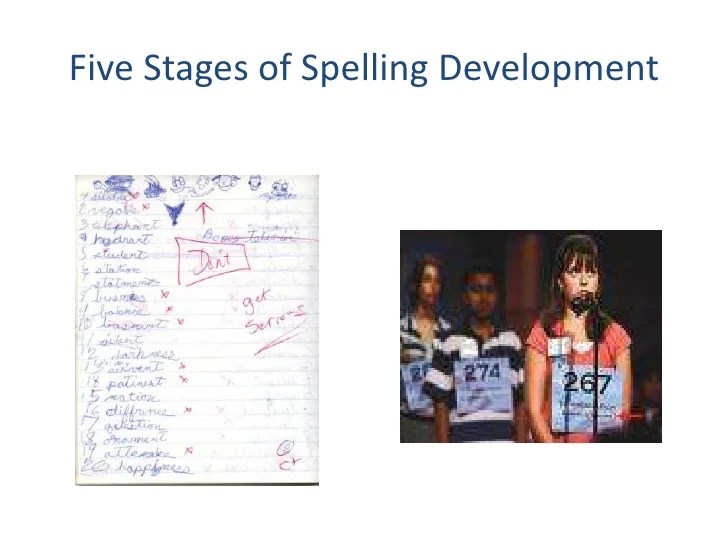Gentry’s stages of spelling development provide a comprehensive framework for understanding the cognitive processes involved in learning to spell. From pre-writing scribbles to the mastery of conventional orthography, this journey offers insights into the complexities of language acquisition and the development of literacy skills.
Gentry’s model Artikels eight distinct stages, each characterized by unique spelling patterns and cognitive strategies. These stages reflect the gradual transition from preliterate marks to the accurate and efficient use of written language.
Gentry’s Stages of Spelling Development

Gentry’s Stages of Spelling Development is a model that describes the progression of spelling skills in children as they develop. The model consists of eight stages, each characterized by distinct spelling patterns and cognitive processes.
Pre-Writing Stage
The pre-writing stage is the earliest stage of spelling development and occurs before children begin to write letters. During this stage, children engage in scribbling and drawing, which helps them develop the fine motor skills necessary for writing and the cognitive skills necessary for understanding the concept of written language.
Early Writing Stage
The early writing stage begins when children start to produce letter-like forms. These forms may not resemble actual letters, but they represent the child’s attempt to represent speech sounds in written form. Children also begin to use invented spelling, which involves creating their own spelling patterns based on the sounds they hear.
Letter-Name Alphabetic Stage
In the letter-name alphabetic stage, children begin to use letter names to represent sounds. They learn the names of the letters and associate them with the corresponding sounds. This stage is characterized by the use of letter-name spellings, which are spellings that use the names of the letters to represent the sounds in words.
Within-Word Pattern Stage
In the within-word pattern stage, children begin to recognize spelling patterns within words. They learn to identify common letter combinations, such as consonant blends and digraphs, and they begin to use these patterns in their spelling. This stage is also characterized by the use of morphemes, which are the smallest units of meaning in a word.
Syllable Juncture Stage
In the syllable juncture stage, children begin to understand the concept of syllable boundaries. They learn to divide words into syllables and to spell each syllable correctly. This stage is also characterized by the development of morphological awareness, which is the ability to identify and manipulate morphemes.
Derivational Constancy Stage
In the derivational constancy stage, children begin to recognize derivational patterns. They learn that words that share the same root word often have similar spelling patterns. This stage is also characterized by the importance of morphology, which is the study of the structure of words.
Contextual Spelling Stage
In the contextual spelling stage, children begin to use context to inform their spelling choices. They learn to take into account the meaning of the words they are writing and the surrounding words in order to spell words correctly. This stage is also characterized by the role of vocabulary and reading comprehension.
Orthographic Stage, Gentry’s stages of spelling development
In the orthographic stage, children master conventional spelling patterns. They learn to spell words correctly according to the rules of the language. This stage is characterized by the importance of proofreading and editing.
Commonly Asked Questions
What are the key characteristics of the pre-writing stage?
The pre-writing stage is characterized by scribbling, drawing, and other non-representational marks. Children at this stage are exploring the physical act of writing and developing their fine motor skills.
How does phonemic awareness develop in the early writing stage?
In the early writing stage, children begin to recognize the sounds that make up words. They use invented spellings to represent these sounds, which helps them develop phonemic awareness.
What is the significance of morphemes in the within-word pattern stage?
Morphemes are the smallest units of meaning in language. In the within-word pattern stage, children begin to recognize spelling patterns within words, such as prefixes, suffixes, and root words.


